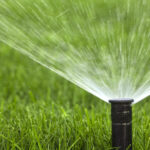WHAT’S WRONG WITH MY LAWN? (2023)
LAWN CARE CONCERNS
Summer has arrived, and it’s time to take advantage of the warm weather. Although people in colder areas enjoy the heat, it can have negative effects, especially on lawn care. During the summer, our lawns have to bear the brunt of the heat and endure the increased foot traffic from social events, barbecues, and outdoor games.
Due to the dryness and heat of summer, you may be experiencing problems with your lawn, such as drought. Weed Man can help you. We’ve compiled a set of lawn care instructions to assist you in saving your lawn from disaster this summer.
SUMMER DROUGHT: YOUR LAWN’S WORST NIGHTMARE
During the summer, homeowners frequently confront drought, which is a significant issue. Drought occurs when temperatures rise, and rainfall becomes infrequent. Grass is robust and can survive drought for around 5-6 weeks before it begins to die off. However, with the current warm weather, it’s essential to take action to improve your lawn’s condition.
HOW DO I KNOW IF MY LAWN IS SUFFERING FROM DROUGHT STRESS?
Generally, yo
u can expect to see symptoms of drought after long periods of blistering heat in conjunction with a lack of rain. Indications that your lawn may be suffering from drought may include:
- Grass that has taken on a blue-grey color
- Footprints and wheel marks that bounce back very slowly after walking on or mowing the lawn.
When this occurs. Water your lawn immediately, regardless of the time of day. However, keep in mind that there are ideal watering practices to follow to avoid dealing with drought in the first place.

HOW CAN I PREVENT OR IMPROVE DROUGHT SYMPTOMS?
WATERING TIPS
Seeing as drought is caused by a lack of water, the best thing you can do to prevent or improve drought symptoms is to water your lawn. When watering your lawn, keep in mind:
- Lawns typically require 1 – 1.5 inches of water per week, and more when temperatures are more severe.
- Lawns should be watered early in the morning to reduce evaporation waste which occurs in the afternoon and to prevent lawn disease from standing water in the evening.
- Water deeply and infrequently. This is the best way to encourage deep, healthy root growth, making your lawn more drought tolerant.
- If your lawn has become dormant, it will green up when the cooler weather and rain returns—do not try to water it back to life, giving too much water to your lawn will suffocate it.

MOWING TIPS
Proper mowing practices are also important, especially during the hot summer months. Before mowing, make sure your lawn really needs it. If your lawn has stopped growing or looks dry and brown, it should not be mowed. If your lawn does need to be mowed, however, remember the following:
- Ensure that your mower blade is sharp. Dull mower blades will tear the grass plats, making your lawn look unhealthy and leaving it vulnerable to turf disease.
- Set your mower blade to the highest setting, as longer turf will protect the roots from the summer sun

IS THERE ANYTHING ELSE I SHOULD KNOW ABOUT SUMMER LAWN CARE?
When it’s hot outside and your grass is struggling to grow, try not to play too many games or walk on it too much. It needs some time to rest and get better. Just like when you’re feeling sick, you might need to stay in bed to get better, your lawn needs some time to recover too.
Apart from drought, homeowners face various issues during the summer. Level Lawn advises regularly checking the property’s perimeter for signs of stress such as insect problems or disease. If weeds are appearing on your lawn, you may request a free re-application of treatment to keep the problem under control.
If you notice anything unusual on your lawn, you can contact your local Level Lawn Professional. They will conduct a free healthy lawn analysis and assist in diagnosing any issues.
Brought to you by Level Lawn: we take care of your lawn so you don’t have to.


Wow this is super informative!
Wow, incredible weblog structure! How long have you ever been blogging for?
you made blogging look easy. The entire glance of your website is excellent, let alone the content!
You can see similar: sklep online and here sklep internetowy